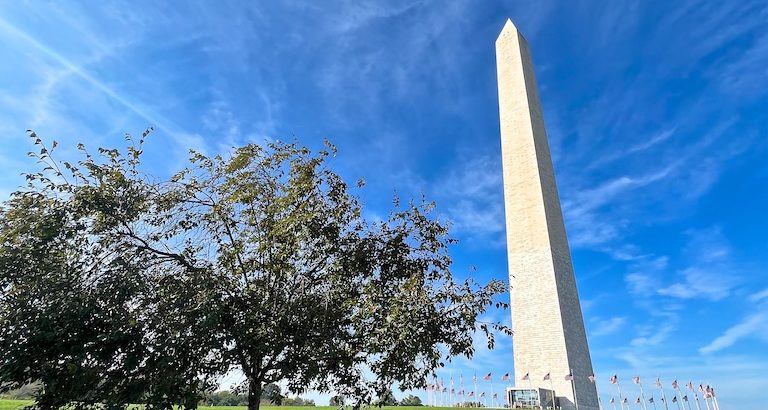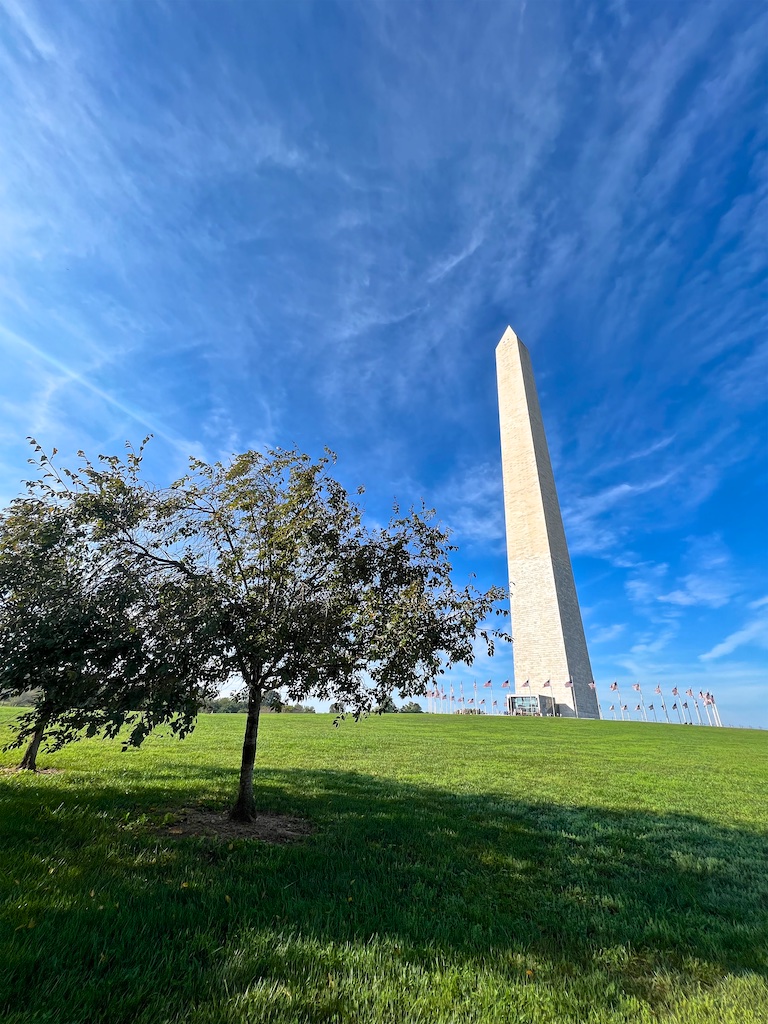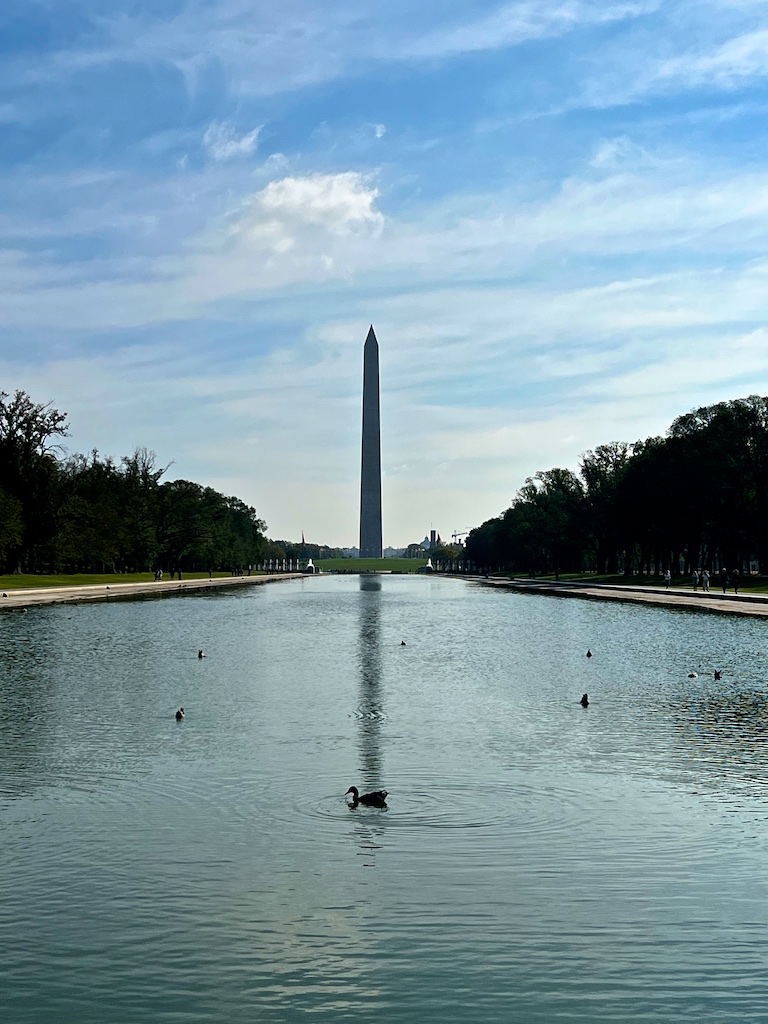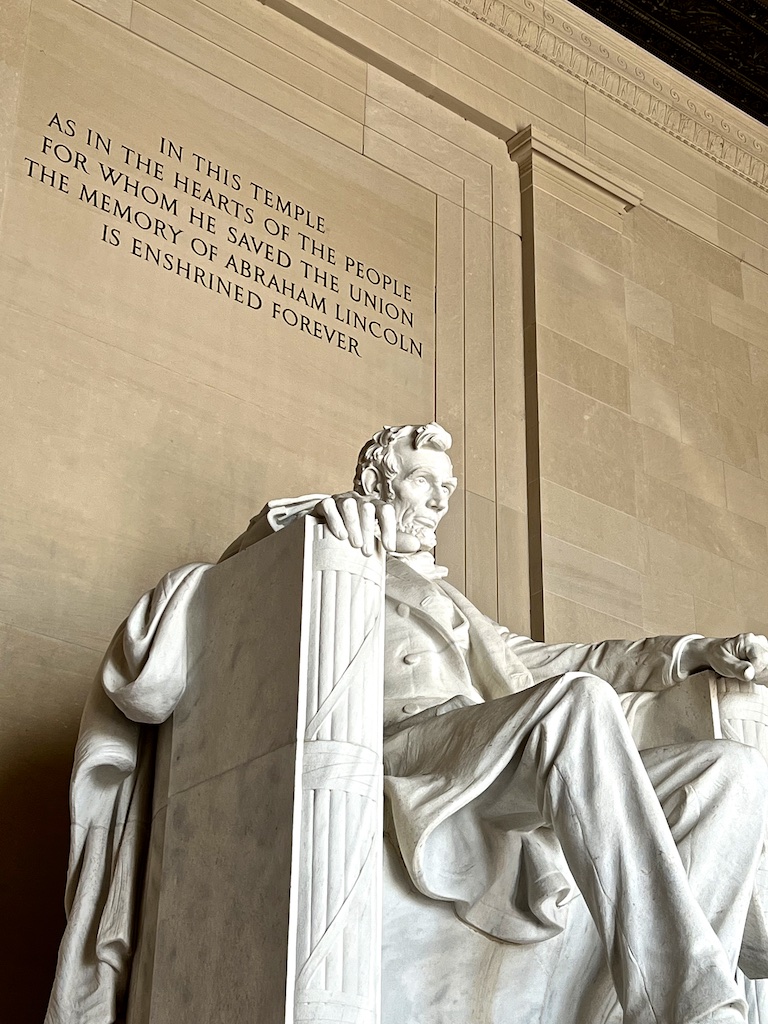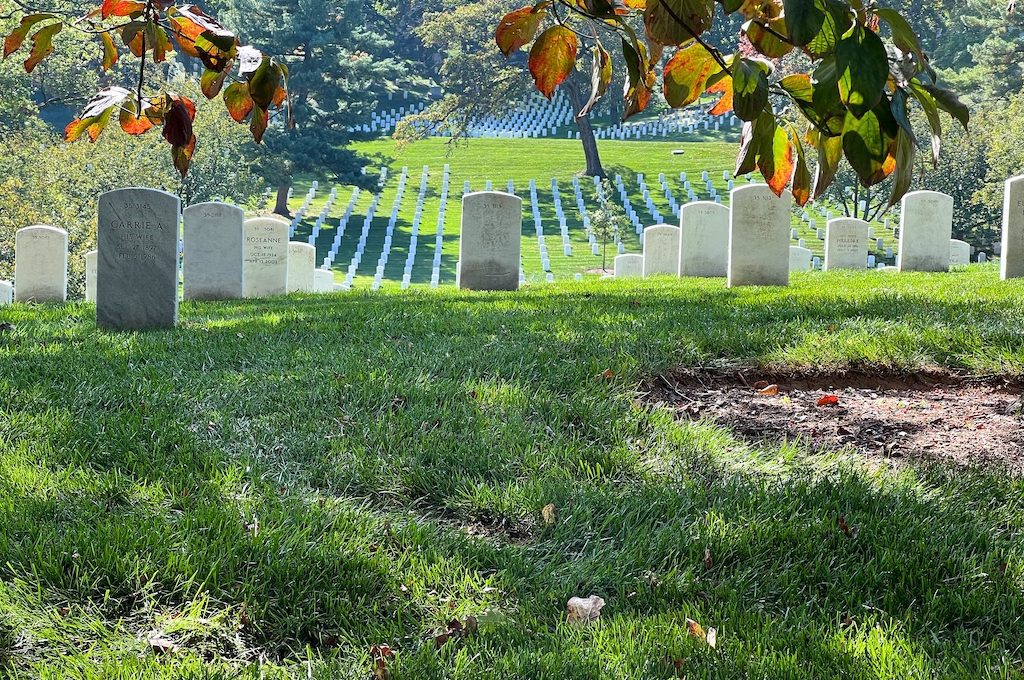I’ve traveled all around the world and have seen a lot of bucket-list worthy places. And while it’s impossible to rank all of these places, in my opinion, the National Mall in Washington DC is way up there and one of the most interesting sites in the world.
If you only have one day or about 24 hours in Washington DC, I would highly suggest that you make your way to the National Mall.
But because there is so much to see there you definitely need to have a plan so that you make the best use of your time and don’t miss out on some of the more hidden attractions.
We recently spent one day exploring the National Mall and I learned a ton about how to best approach crafting an itinerary for a day tour.
In this article, I’ll break it all down for you and give you some guidance so that you can have the best experience possible at this magnificent site.
Table of Contents
What is the National Mall?
The National Mall is not a shopping mall (sorry shoppers). Instead, it’s an expansive area consisting of open park grounds, world-class museums, war memorials, famous historical monuments, and some of the most important US government buildings.
People visit the National Mall to check out what is essentially the headquarters of US government, explore the renown museums, and perhaps most importantly, honor and reflect on all of the sacrifices made by those in the past that allow us to enjoy the freedoms we have today.
Note: Some people define the National Mall proper as consisting of a smaller area but for purposes of this article, I’m lumping all of the major attractions that border the National Mall into one area since they are all easily accessible once you’re in the general vicinity.
Tip: Use the free app WalletFlo to help you travel the world for free by finding the best travel credit cards and promotions!
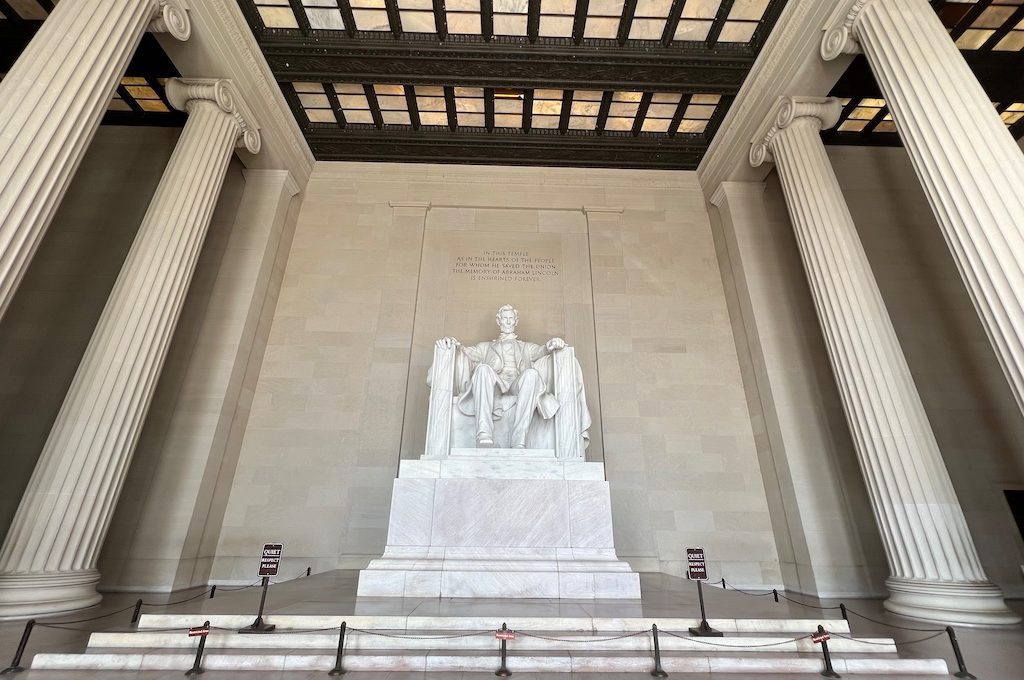
What sites can you see at the National Mall?
When visiting the National Mall you’re going to see a mixture of government buildings, memorials, monuments, and museums.
Here’s a rundown of some of the most interesting sites you’ll likely want to focus on:
Government Buildings
- Supreme Court
- Library of Congress
- US Capitol (Congress)
- White House
- Eisenhower Executive Office Building
- US Treasury Department
Memorials and monuments
- Dwight D. Eisenhower Memorial
- Washington Monument
- World War II Memorial
- Vietnam Veterans Memorial
- Lincoln Memorial
- Korean War Veterans Memorial
- Thomas Jefferson Memorial
- Martin Luther King, Jr. Memorial
- Franklin Delano Roosevelt Memorial
- Arlington National Cemetery/The Tomb of the Unknown Soldier (across the Potomac)
- US Marine Corps War Memorial (across the Potomac)
Museums
- National Gallery of Art
- Smithsonian National Museum of Natural History
- National Archives Museum
- National Museum of the American Indian
- Hirshhorn Museum
- Smithsonian National Museum of American History
- Smithsonian Castle
- National Museum of African American History and Culture
- United States Holocaust Memorial Museum
- National Portrait Gallery (few blocks away)
Food and snack huts
You can find a lot of food and snack huts throughout the National Mall. As you would probably guess the prices will be expensive but you can purchase things like water bottles, chips, and hot food items like burgers, pretzels, etc.
One thing that surprised me was the number of bathrooms. There are some permanent bathroom facilities but also rows of portable toilets in case you need to go.
Hotel Review: AC Hotel Washington DC Convention Center
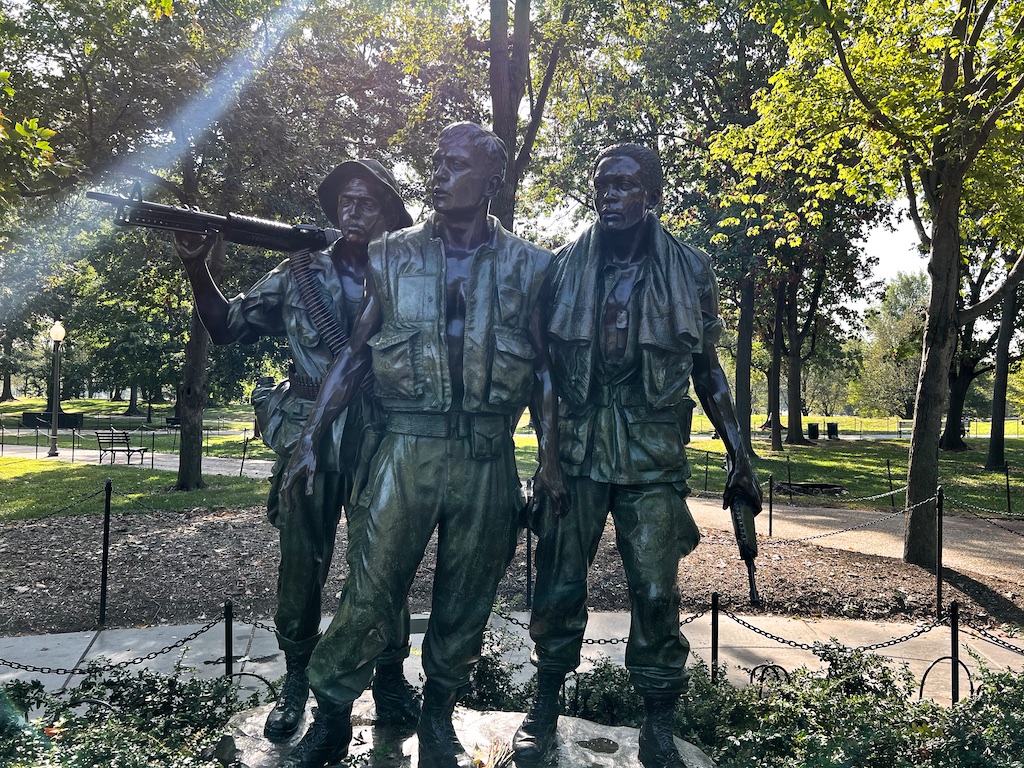
What is the best way to see the National Mall?
Walking + Uber
I would highly recommend you to consider walking throughout the National Mall.
If you are able-bodied this will be the best way to see the National Mall and it’s a beautiful walk to do when the weather permits.
My preferred way of exploring is to walk until you basically are not enjoying the walking anymore and then rely on a ride sharing service like Uber to get you back to your hotel to recharge or simply take you to your next destination.
Bike
I saw quite a few bike stations around the National Mall and it seems like a great way to get around. I just don’t like to bother with locating the stations and dealing with a bike so I prefer to just walk via foot.
If you want to rent a bike you can look into services like Capital Bike Share.
Bus
Like every other major city that attracts a lot of tourists, you can choose to do a hop on hop off bus tour. These can be a great way to get around but it does mean having to rely on a bus and dealing with certain stops.
Some of these bus tours have audio recordings that can give you more insight into the sites so it’s not a bad way to see the National Mall.
Driving
Driving does not seem like a very practical way to see the National Mall because of limited parking and traffic.
However, if you get familiar with the different parking areas and are comfortable driving you might be able to make it work.
Also, if you are driving in the early morning or evening parking will be more readily available and driving is much more doable.
What order should you visit the sites at the National Mall?
The good news. There is no wrong way to explore all of the memorials and museums in the National Mall. You could start at either side or even in the middle.
The bad news. That doesn’t really help your planning at all.
So to help give your visit some structure, here are three major tips:
Don’t worry about planning exact visit times
Unless you are planning on attending some type of specific tour or timed-entry attraction, you don’t have to plan out your visit times to any of the below locations and you can just check them out at your own pace.
Set a practical limit for your sites
If you only have one day you should draw the line somewhere on the number of sites you plan to see because one day is simply not enough time to see it all.
This is especially true with sites like museums that eat up huge chunks of time.
Start from the east side
I would recommend following the path that we did starting on the east side of the National Mall and then work towards the west.
Below, I’ll walk you through the itinerary we did and provide you with more tips to avoid some of the mistakes we made.
Note: For this itinerary to work, you want to get started early – no later than 8am.
National mall sites (itinerary)
Supreme Court
I’m probably a little bit biased because of my lawyer background but I thought stepping on the steps of the Supreme Court was extremely cool.
It’s a beautiful courthouse and it’s a shame that it’s a bit tucked away behind the US Capitol Building, but I guess there was really nowhere else to put it in the National Mall by the time they built it in the 1930s.
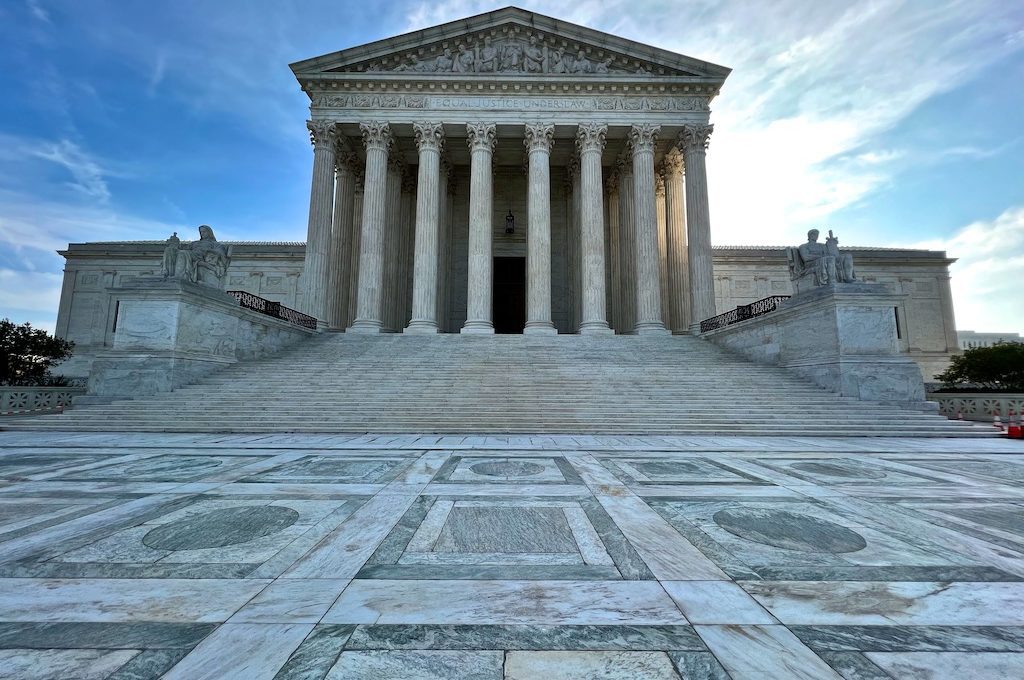
If you don’t want to settle for glimpses of the Supreme Court’s exterior, you can head inside to check out more.
The Supreme Court does not offer guided tours of the facility but there are self-guided exhibitions you can check out. They also have lectures that they offer which are available on days that the Court is not in session.
These lectures are available Monday through Friday on a first-come, first-served basis and are free of charge. They usually begin every hour on the half-hour beginning at 9:30 am with the final lecture at 3:30 pm.
Right next door to the Supreme Court is the Library of Congress — a beautiful building known for being the largest library in the world.
Also, if you’re a Shakespeare fan you can check out the Folger Shakespeare Library whenever it opens back up.
US Capitol Building
Right next to the Supreme Court is the US Capitol Building.
Construction of the US Capitol Building began in 1793 and in 1800, Congress met in the first completed portion, the north wing.
Something a lot of people don’t know is that there is a huge US Capitol Visitor Center located underneath the US Capitol Building.
In fact, the visitor center is about 3/4 the size of the Capitol!
During normal times you can book tours of the Capitol Building and check out the Visitor Center but due to the pandemic these are currently not available.
When they do open up, advanced reservations will likely still be recommended or even required.
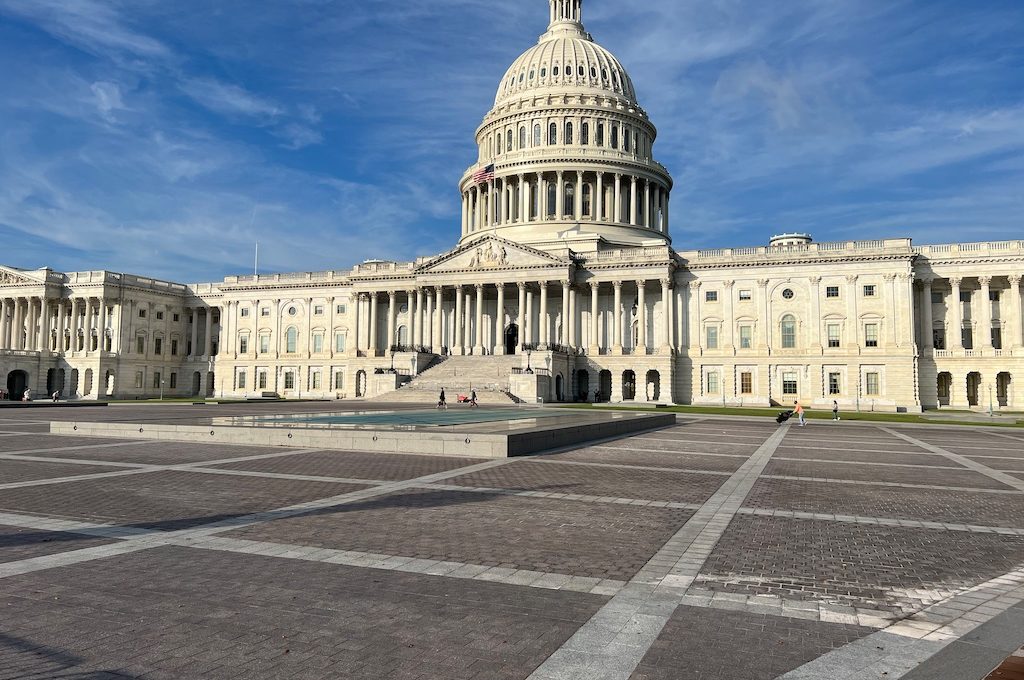
After you make your way past the Capitol Building you are now in close proximity to several of the best museums in Washington DC.
My personal preference is to focus on all of the outdoor sites in the National Mall first.
This is an ideal strategy for a few reasons.
First, this will allow you to stay in a mindset of remembrance when visiting the monuments and war memorials.
It’s also a great plan because if you are visiting when the temperatures can get warm you can check out all of the sites early in the morning when the weather will be cooler.
Then, when things start to heat up you can head indoors to the museums.
And finally, some of these museums don’t open until 10am so if you get started early (around 7am to 8am) you can explore a lot of the National Mall before the museums even open their doors.
Note: If you do choose to hit up the museums at this point, check out the section at the bottom of this article on the National Mall’s museums.
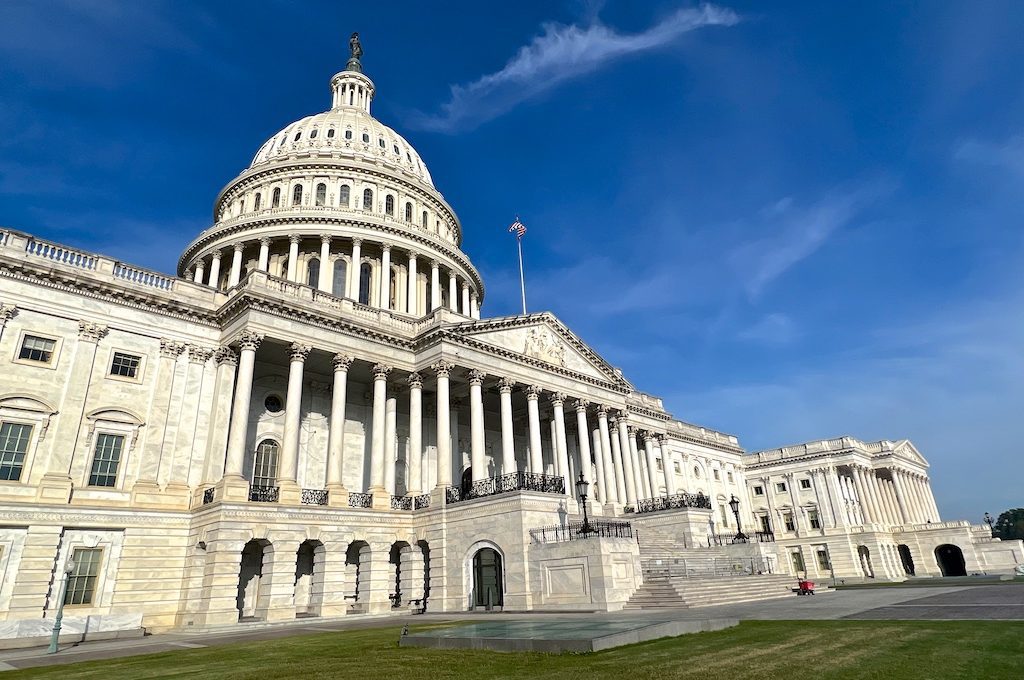
Once you pass the Capitol Building you can make a quick stop to the Ulysses S. Grant Memorial which is just west of the building. Ulysses S. Grant was a U.S. President and Civil War general for the victorious Union Army.
After that, you’ll then be heading west on the National Mall.
I would suggest staying on the south side so that you can make a short side trip to the one of the newest monuments dedicated in 2020: the Dwight D. Eisenhower Memorial.
If you’re putting off visiting the museums, the next visit will be the Washington Monument.
Washington Monument
The Washington Monument — which honors the first president of the US: George Washington — is the most iconic symbol of Washington DC.
Built on July 4, 1848 and dedicated on February 21, 1885, this marble obelisk stands 555 feet tall — ten times the width of the base.
If you look closely at the Washington Monument, you’ll notice the two different colors of the monument.
During the construction they basically ran out of one type of stone and had to use a different type which is why the monument is bi-colored.
The monument has undergone a lot of restoration work through the decades including in 2011-2014 when it sustained damage from an earthquake!
If you want to, you can head to the top of the monument but you need to book tickets ahead of time. Head to recreation.gov and you can try to get tickets the day before your visit.
You’ll take an elevator all the way up to the top which thankfully is not the original steam engine elevator which took 10 to 12 minutes to make its way to the top floor.
After your visit, you can turn north and head to the White House which is only about a 20 minute walk from the Washington National Monument.
But as I discuss below, we decided to save the White House for last and went straight from the Washington National Monument to the World War II Memorial.
World War II Memorial
The World War II Memorial, dedicated by President George W. Bush on May 29, 2004, is one of the most impressive war memorials in DC.
It honors the “service of 16 million members of the Armed Forces of the United States of America, the support of countless millions on the home front, and the ultimate sacrifice of 405,399 Americans.”
56 Granite columns representing each U.S. state and territory at the time of World War II surround you in the middle as you contemplate the scale of people who were involved in the war.
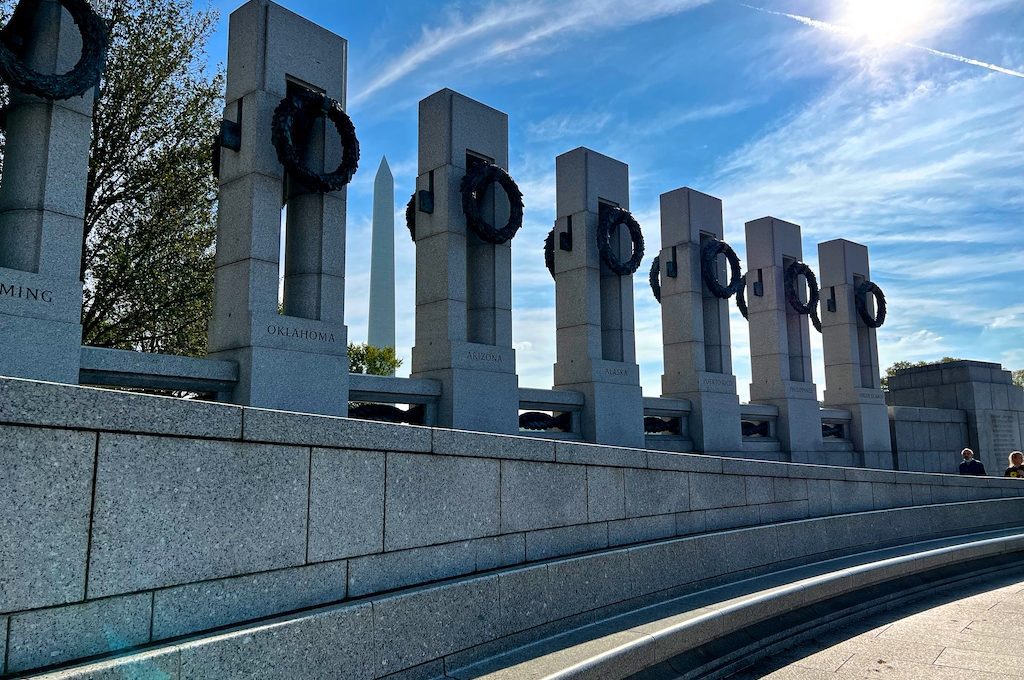
Seeing the columns for all of the states and territories gave me a sense of the unity required to come out victorious in such a massive war.
For a war memorial, it actually felt a bit uplifting, which was weird considering it was the most costly war in terms of human life.
Ironically, I think that was one of the biggest criticisms of this monument — it was a bit too “celebratory” and “pompous” for some.
As you wander, spend some time locating your state’s column on the perimeter of the memorial while paying respects for those from your home who made the ultimate sacrifice.
Then head to the center of the memorial where you’ll find the pool which I think still goes to the name of Rainbow Pool.
There’s a bit of controversy on whether or not it’s disrespectful to get in the water of Rainbow Pool, which is something visitors do on hot days.
At the time of our visit, signs indicated that putting your feet in the water was okay but wading was not. So use common sense there.
At the back, there’s a wall of 4,048 gold stars which was designed to remind visitors of all of the sacrifices made by over 400,000 Americans. Each star represents 100 US deaths.
Tip: Don’t forget to look for Kilroy
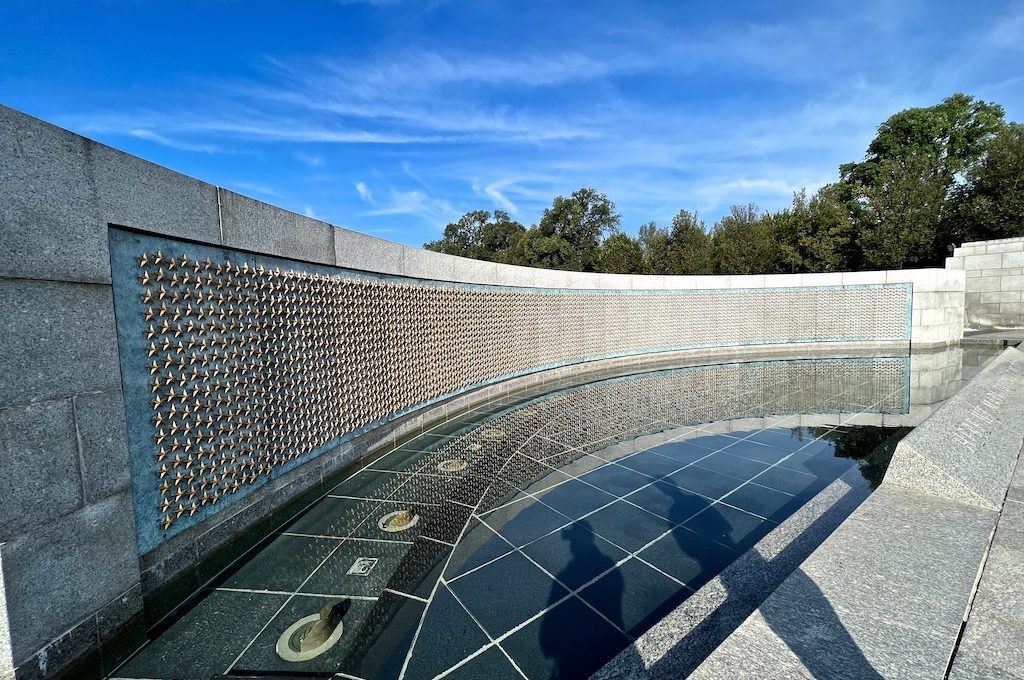
After you make your way past the World War II Memorial, you have a choice to make.
You could go ahead and make a loop around the Tidal Basin which is where you find sites like the Jefferson Memorial.
Or you could put that loop off until later and simply keep going west where you will encounter the famous Lincoln Memorial Reflecting Pool.
We chose to put off the Jefferson Memorial until later which I think is a good call but you really can’t go wrong with either way.
Lincoln Memorial Reflecting Pool
Built in the 1920s, the Lincoln Memorial Reflecting Pool is not only a place where you can catch a beautiful reflection of the monuments, surrounding trees, and sky.
It’s also a place to reflect on all of the people and events that have shaped our nation’s history over the centuries.
When we arrived at the Lincoln Memorial Reflecting Pool, I was a little bit disappointed to find out the pool was not filled up all the way.
I’m not sure how often that happens and perhaps it was due to some cleaning but it took a little bit away from the beauty of the Reflecting Pool if I’m being honest.
At least we still had the ducks, I guess.
At any rate, we chose to walk along the north side of the Reflecting Pool so that we would arrive at the next location, the: Vietnam Veterans Memorial.
Vietnam Veterans Memorial
When people talk about war memorials in DC it seems like the most moving of these is the Vietnam Veterans Memorial.
Just how important is this memorial?
At the dedication on November 11, 1982, there was a 56-hour reading at Washington National Cathedral of all the engraved names of the dead.
Undoubtedly, the listed names of 58,318 Americans on the shiny black granite wall will leave you with a lasting impression of the sacrifice that so many people made.
The order of the names is a little confusing but basically they are listed in chronological order of the time of passing.
The earliest death begins in the middle of the memorial (at the high point) and then names follow chronologically to the right until you get to 1968.
At that point, the names resume on the short end of the west panels and then follow chronologically towards the center. This way the first and last deaths meet up with each other in the middle.
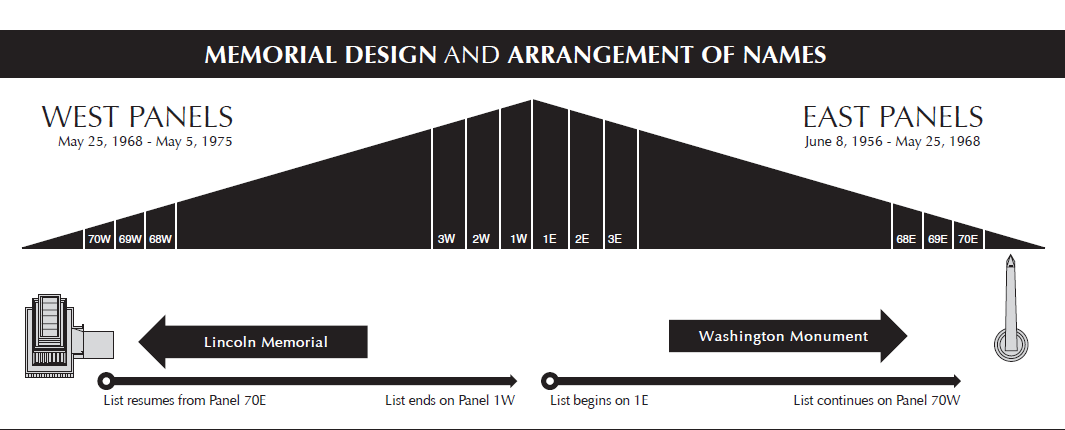
There’s also a code of sorts used on the memorial.
As the NPS states:
Those declared dead are marked by a diamond; those MIA are marked by a cross. If the person currently marked as MIA returns alive, a circle is placed around the cross. If his remains are identified, a diamond is superimposed over the cross.
For me, knowing how brutal the tactics were in this war it was very moving to see all of these names. I could only imagine the stories those people could tell.
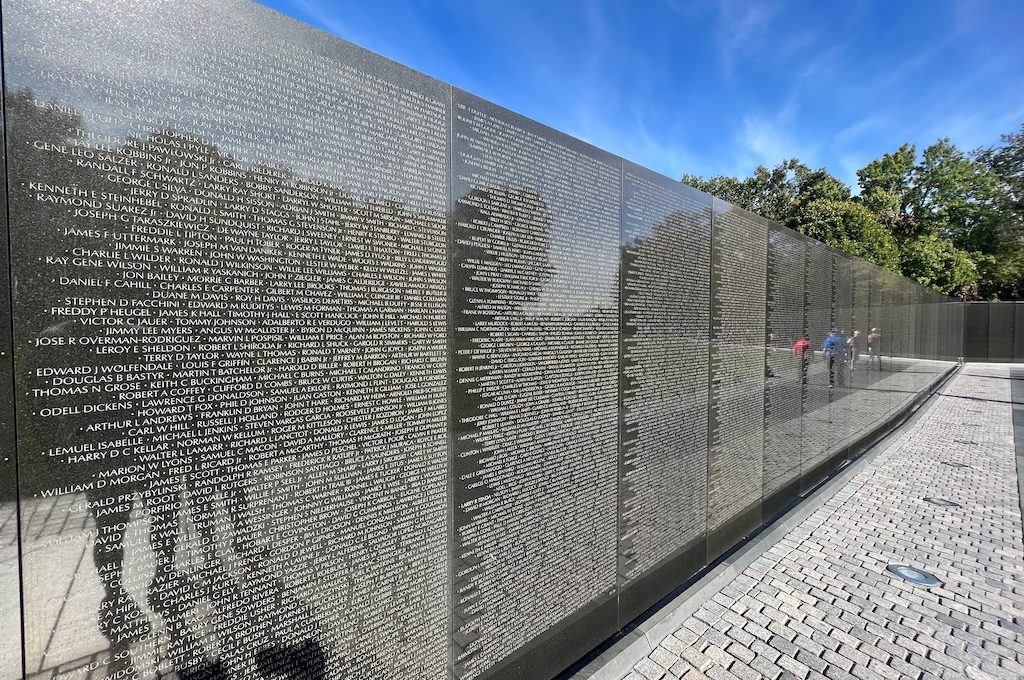
Other elements to check out include the: The Three Serviceman statue, the Vietnam Women’s Memorial, the In Memory plaque, and a flagpole that flies both the U.S. and the MIA-POW flag.
Find a bench near these to rest your legs and plan out your next move, which likely will be the Lincoln Memorial.
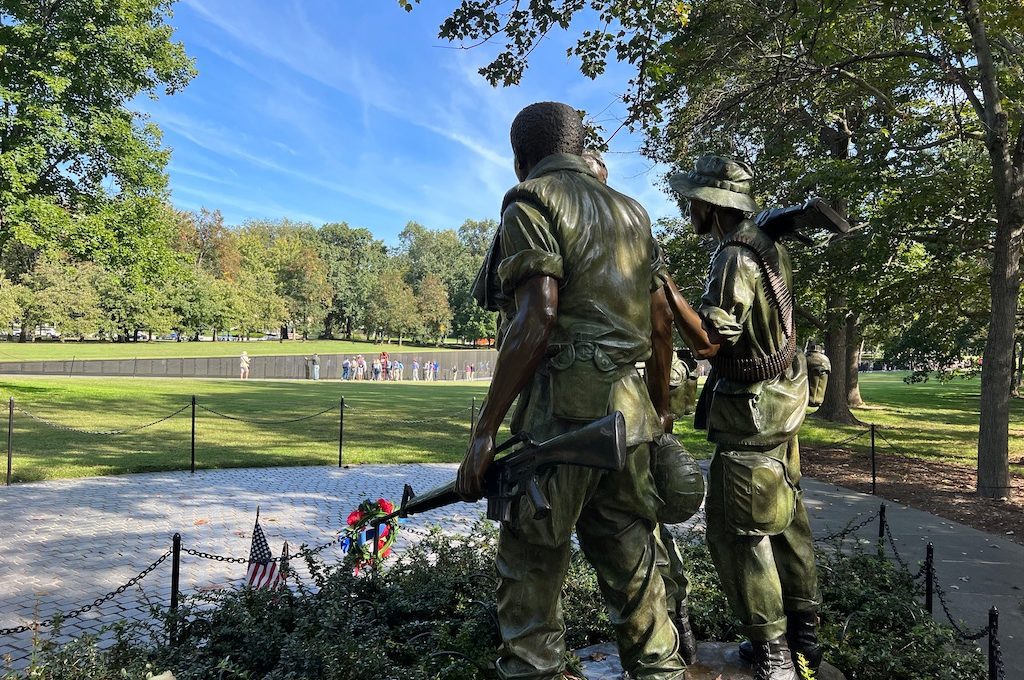
Interesting fact: the Salem Witch Memorial was inspired by the Vietnam Veterans Memorial.
Lincoln Memorial
I like that we started at the east end of the National Mall because it built up lots of anticipation for the Lincoln Memorial.
There’s something about the Lincoln Memorial that just feels so uniquely inspiring and powerful.
I think it’s a combination of Lincoln’s tragic assassination and honestly just growing up with the Lincoln Memorial on the back of all our pennies and five dollar bills.
Either way, if we are talking about the monument with the biggest “oooh” factor it is hands-down the Lincoln Memorial.
Modeled after the Parthenon in Athens, Greece, and dedicated in 1922, the Lincoln Memorial is a masterpiece.
You’ll find 36 fluted Doric columns rising 50 foot high columns and surrounding the temple (one for each of the 36 states in the Union at the time).
The 19-foot sculpture of Lincoln, which took four years to complete, possesses some subtle symbolic meaning if you look closely.
The creator positioned Lincoln’s hands so as to display his two most important qualities.
One hand is clenched, which represents Lincoln’s strength and determination to finish the war.
The other hand rests open representing his compassionate, warm nature.
Even the steps outside are rich with history as this is where Martin Luther King gave his famous “I Have a Dream” speech.
You can look for the exact location on the steps where King delivered the speech as there is an inscription. Be prepared for the goosebumps.
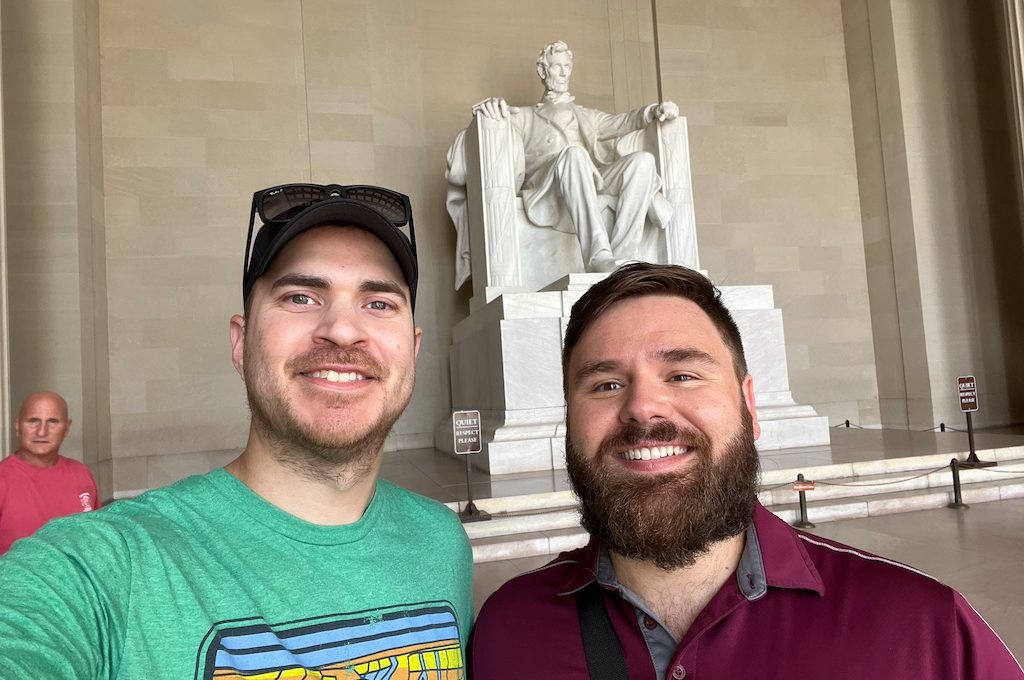
Inside the memorial, engraved on the interior walls, you’ll find the Gettysburg Address and Lincoln’s Second Inaugural Address, which he made only 41 days before his assassination.
Above the inscriptions, you can find a 60 foot by twelve foot mural painted by Jules Guerin which is meant to portray the governing principles of Lincoln’s life.
There are also some bathrooms and exhibits underneath the memorial.
Korean War Veterans Memorial
The Korean War Veterans Memorial is one of the lesser talked about memorials in DC even though it saw 33,686 US deaths.
In fact, the war as a whole has sort of lived in the shadow of Vietnam considering that the Korean War happened before Vietnam but didn’t have a memorial until 1995 (built after the Vietnam Memorial in 1982).
For that reason, I felt a special obligation to spend some time honoring the fallen of “the Forgotten War.”
That plan was kind of ruined when we arrived because there was a lot of ongoing construction and it was just not the ideal time to visit.
With that said, I would like to go back when the memorial has been renovated.
At this memorial you’ll find 19 stainless steel statues, a wall of remembrance, and I’m sure some impressive new features that will be finished soon.
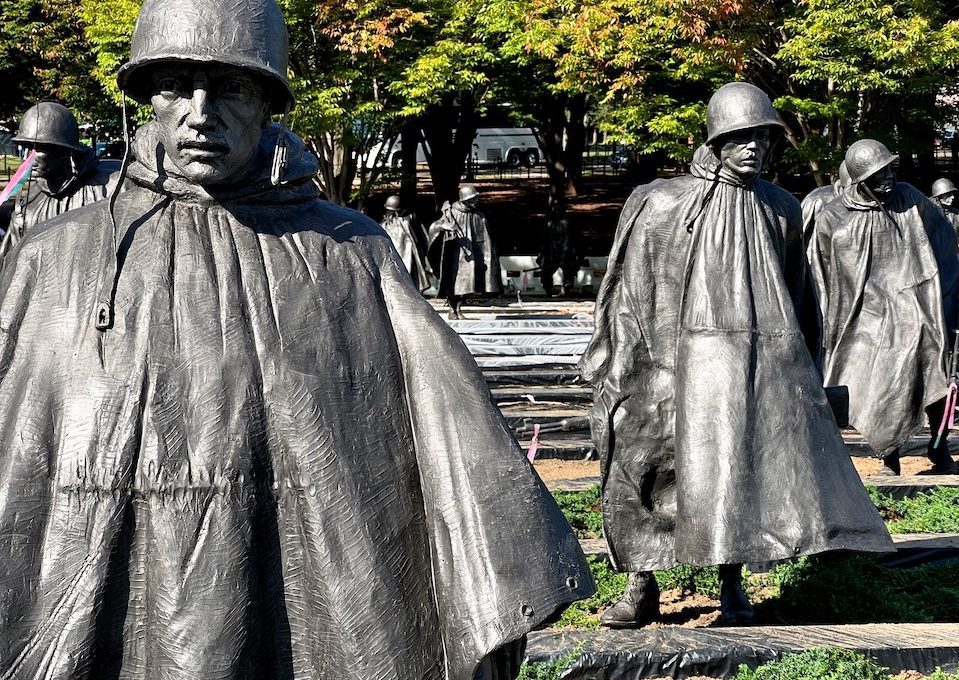
After you visit the Korean War Memorial you now have another decision to make of whether or not you want to proceed towards the Jefferson Memorial and knock out a few more sites around the Tidal Basin.
Or, you can do what we did and proceed to Arlington National Cemetery.
You could of course do both but that will involve a lot of additional walking and time. If you plan on hitting up some of the museums I would not try to walk to both of these locations as that will eat up a lot of time.
Arlington National Cemetery
We chose to walk from the National Mall to Arlington National Cemetery.
We did not see any other tourists making this walk so I don’t think a lot of people choose to make the way to the National Cemetery by foot.
However, I would recommend making the walk.
For one, it’s a pretty cool walk and you get to cross the Potomac River as well as the state lines for Virginia. (It’s not every day you get to walk across state lines in the US.)
But more importantly the Arlington Memorial Bridge is an incredibly symbolic bridge to America.
Built in 1932, Arlington Memorial Bridge is a symbolic bridge that crosses the Potomac River, a body of water which once divided the Northern and Southern states.
Moreover, it connects the Lincoln Memorial to Robert E Lee’s Memorial as part of an intentional act of symbolism that represents the nation coming back together post Civil War.
To access the cemetery you’ll need to go through security so this is not your ordinary cemetery wide open to the public.
Inside the cemetery, there are tram tours that depart every 30 minutes, from 9 a.m. to 4 p.m. daily. However, we opted to just walk around on our own.
I’m definitely not a big “cemetery person” but Arlington National Cemetery is quite beautiful and unlike any cemetery I’ve ever visited. It’s vast, historic, and peaceful.
Within the cemetery there are many different sites to see.
The most famous is probably The Tomb of the Unknown Soldier.
Since 1921, it’s been the home to an unidentified World War I service member. Unknown military members were added from later wars in 1958 and 1984.
It’s also just been a sight of mourning and reflection for all of those in the military.
Changing of the guard ceremonies go on throughout the day and you just need to time your visit so that you can witness one of them.
Luckily, this isn’t hard to do.
The ceremonies happen every hour on the hour from October 1 through March 31, and every half hour from April 1 through September 30. They are all free to observe.
Every movement from the guards is extremely precise and symbolic like the 21 steps they take and the directions they face, so it’s cool to learn a little bit about the symbolism before you check out the ceremony.
Be extra careful about being noisy or standing in the wrong area and definitely do not trespass to the area where the soldiers are guarding the Tomb.
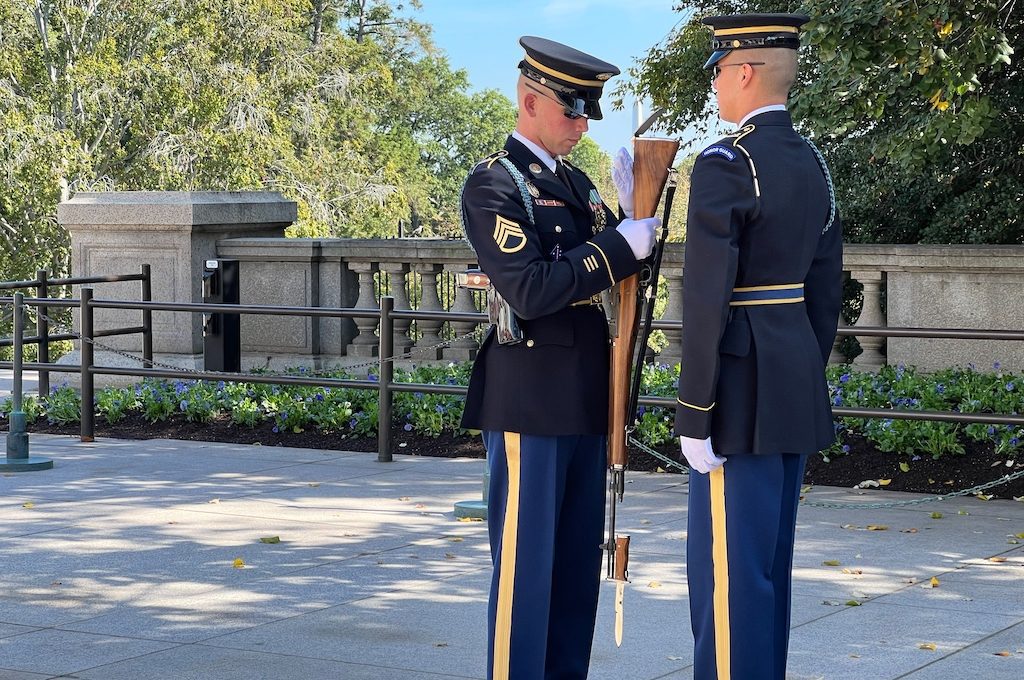
Another interesting site is the gravesite of John F Kennedy, where you can observe the eternal flame.
If you are into checking out gravesites you can also check out the final resting place of Robert Kennedy, William Howard Taft (former president), and Thurgood Marshall.
There is also the Arlington House, The Robert E. Lee Memorial, which has a fascinating and sort of comical history related to the cemetery. Tickets are required to enter the Arlington House.
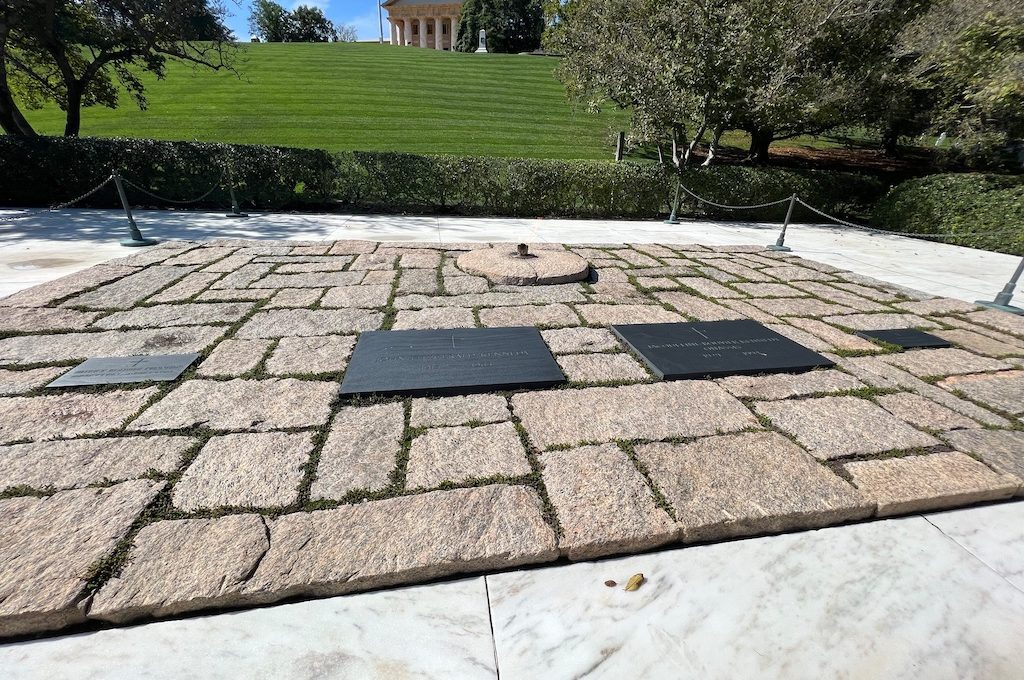
If you have the extra energy you can also make your way to the US Marine Corps War Memorial, which is a creation modeled after a Pulitzer Prize winning photo taken at Iwo Jima (arguably the most famous war photo of all time).
Dedicated in 1954, it honors all Marines who have given their lives in defense of the United States since 1775.
After we finished up at Arlington Cemetery, we ended up taking an Uber back to our hotel room to freshen up a little bit and grab lunch which ended up being a fantastic idea and good use of time.
We were able to recharge and then head back out to check out the museums and eventually the White House. (Read more about the museums below.)
If you go this route just keep in mind the museums do not stay open very late (5pm to 5:30pm) so you need to make sure that you get back to the museums with as much time as you think you’ll need to explore.
Consider going back to the Jefferson Memorial in the evening after you have explored the museums and visited the White House.
Thomas Jefferson Memorial
We carved out some time the next morning for us to visit the Thomas Jefferson Memorial, which is on the Tidal Basin (where people flock to see cherry blossoms in early spring).
We figured that a morning visit would be pretty epic because our visit would coincide with the sunrise and we would probably have the site to ourselves.
Well, we were right — we were able to visit the memorial by ourselves. Just us two and good ole TJ.
But for some reason the lights were off.
This meant that we checked out the large sculpture of Thomas Jefferson in the dark which to be completely honest was a little bit creepy.
Still, I think this is one of the must-see memorials if you only have one day so I would do whatever you can to make time for it.
Nearby to the Jefferson Memorial you can also check out the:
- Martin Luther King, Jr. Memorial
- Franklin Delano Roosevelt Memorial
- George Mason Memorial
If you want to hang out in the Tidal Basin a little longer and get a unique vantage point, consider renting Tidal Basin paddle boats.
We didn’t rent paddle boats but I’ve done paddle boats before in the UK and they can be a work out so be ready to get your legs pumping!
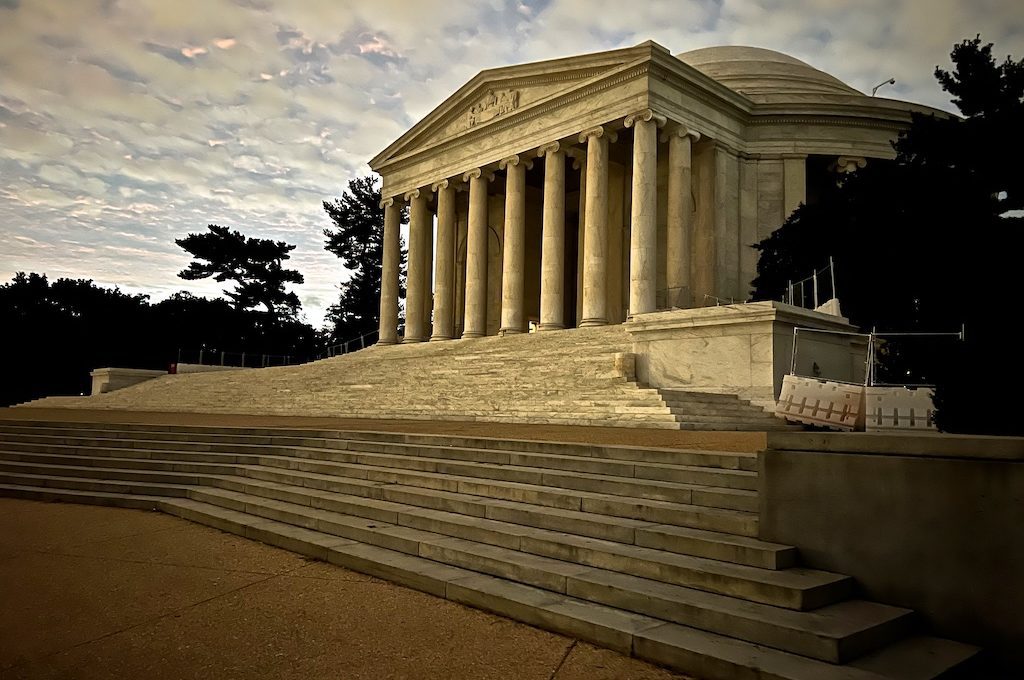
The White House
We decided to save the White House until the end of the day.
For one, temperatures would be a lot cooler and I just thought that ending our tour with the White House would be the right way to go.
There’s been a lot of construction around the White House recently as they have been installing a fence that is twice as high as the old fence and also more durable and secure.
Believe it or not, someone was able to successfully jump the fence and even make their way inside a few years ago.
As long as there are no closures I think you can check out the White House from both the north and south side.
For us, we were only able to check it out from the north view which is a really nice view.
If you want a tour of the inside of the White House that’s possible but you have to plan that well in advance and write to your local Congress representative.
When you’re viewing the White House from the north entrance, it’s hard to see the corridors for the “45 second” commute leading to the East Wing and West Wing, so the White House complex looks a lot smaller than it actually is.
For those that don’t know, the West Wing is where most of the “stuff” happens as that is where you’ll find the Oval Office, the Situation Room, the Cabinet Room, the Press Room, etc.
As you admire the White House you’ll probably see Secret Service members scoping out people from the top of the building and even making patrols through the lawn.
Don’t climb on the fence but feel free to stick your arm through the fence to get a good shot with your camera/phone.
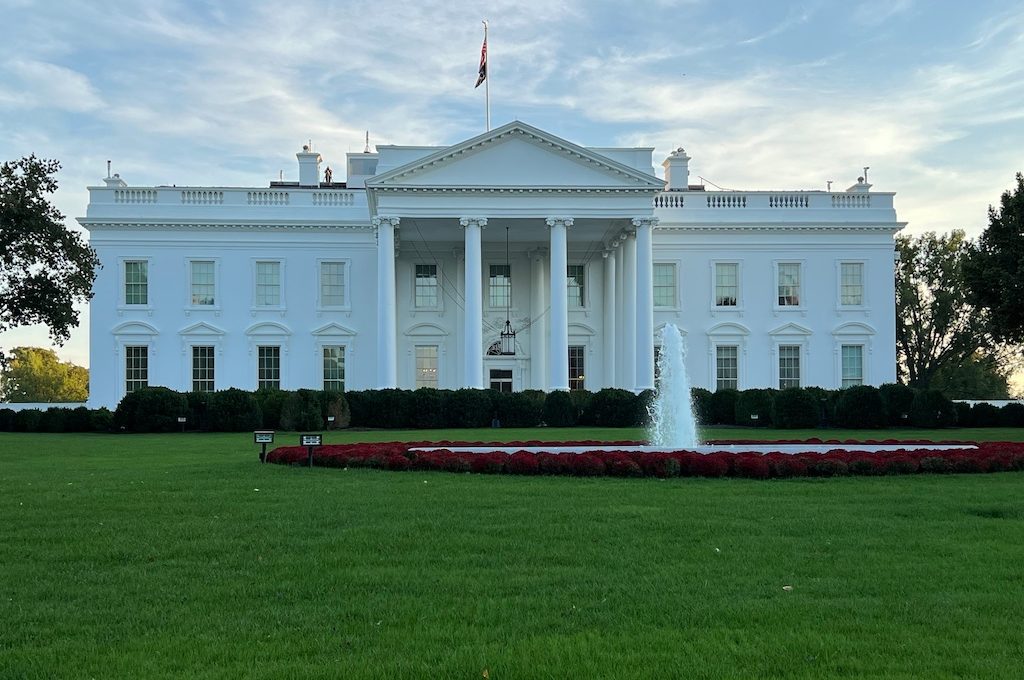
The White House is nearby a couple of additional big-time attractions.
Just next-door is the Eisenhower Executive Office Building (EEOB), which is located next to the West Wing, and houses a majority of offices for White House staff.
Just a few blocks away there is the Ford’s Theatre which of course is where Abraham Lincoln was assassinated.
It has a museum now with lots of exhibits from the tragic assassination and you can still view the balcony Lincoln sat on when everything happened.
Museums at the National Mall
We spent about two hours checking out the museums which is not nearly enough time to fully explore them but if you only have one day, it’s enough time to see and appreciate some of the major highlights.
There are a ton of museums in the National Mall and surrounding area and some of them are 100% free.
Tip: None of the museums were super crowded when we visited but if they do get crowded consider going through the back entrances which might be quicker.
Below, I’ll highlight four of the most interesting museums to check out (in my opinion) and then also provide you with a list of additional museums you might be interested in.
National Gallery of Art
Highlights: Artwork by Leonardo da Vinci, Vincent van Gogh, Johannes Vermeer, and other legendary artists.
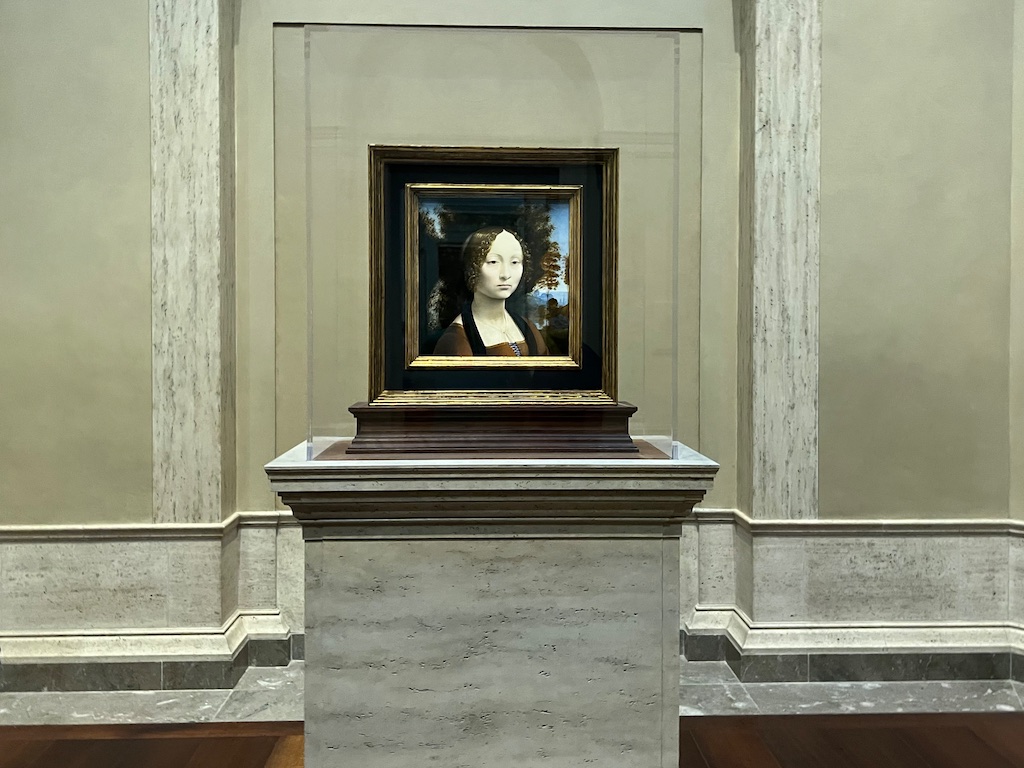
Smithsonian National Museum of Natural History
Highlights: Dinosaurs, cool interactive exhibits, all-around good time.
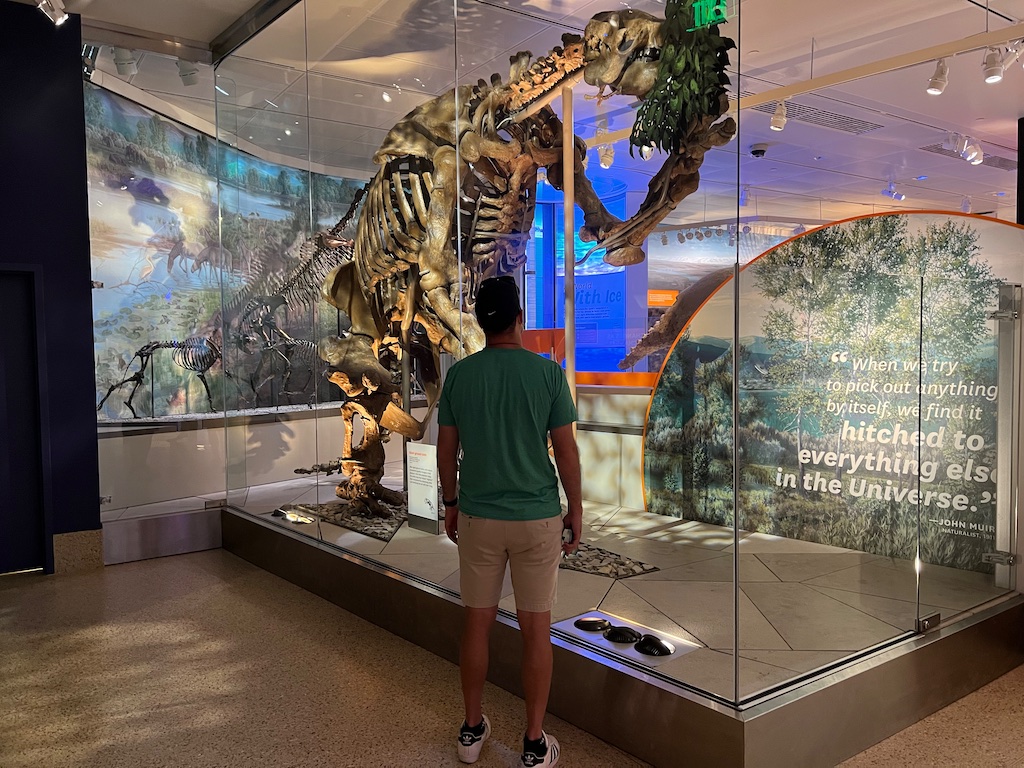
Smithsonian National Air and Space Museum
Highlights: Apollo 11 Command Module Columbia, model of the starship Enterprise, Wright brothers’ Wright Flyer airplane
National Archives Museum
Highlights: Viewing of the Declaration of Independence, U.S. Constitution, and Bill of Rights.
Additional museums you may find worthwhile:
- National Museum of the American Indian
- Hirshhorn Museum
- Smithsonian National Museum of American History
- Smithsonian Castle
- National Museum of African American History and Culture
- United States Holocaust Memorial Museum
- National Portrait Gallery
You could easily spend 2 to 3 hours at a few of these museums and eat up your entire day.
So if you only have one day my suggestion is to choose two of the museums are the most interesting to you and plan on visiting those. Try to give yourself up to three hours between the two museums if you can. Typically, this will mean reserving museum time between 2:30pm and 5:30pm.
Final word
Visiting the National Mall is an experience that you will never forget. Even if you only have 24 hours, you can still see some monuments, museums, and government buildings that will blow your mind. If you follow the itinerary above and get started around 7am you should have a jam-packed day full of amazing experiences.
Daniel Gillaspia is the Founder of UponArriving.com and the credit card app, WalletFlo. He is a former attorney turned travel expert covering destinations along with TSA, airline, and hotel policies. Since 2014, his content has been featured in publications such as National Geographic, Smithsonian Magazine, and CNBC. Read my bio.

